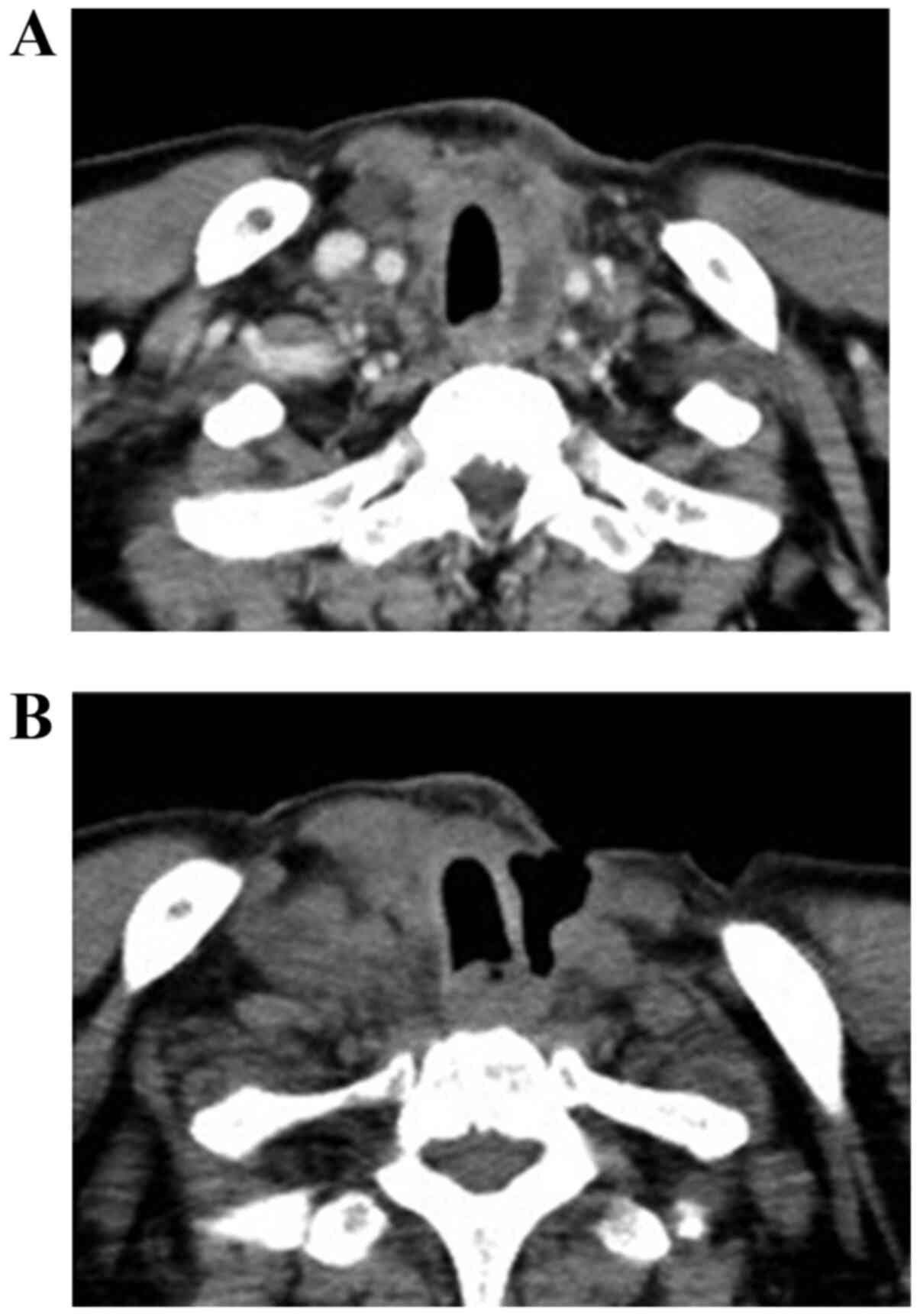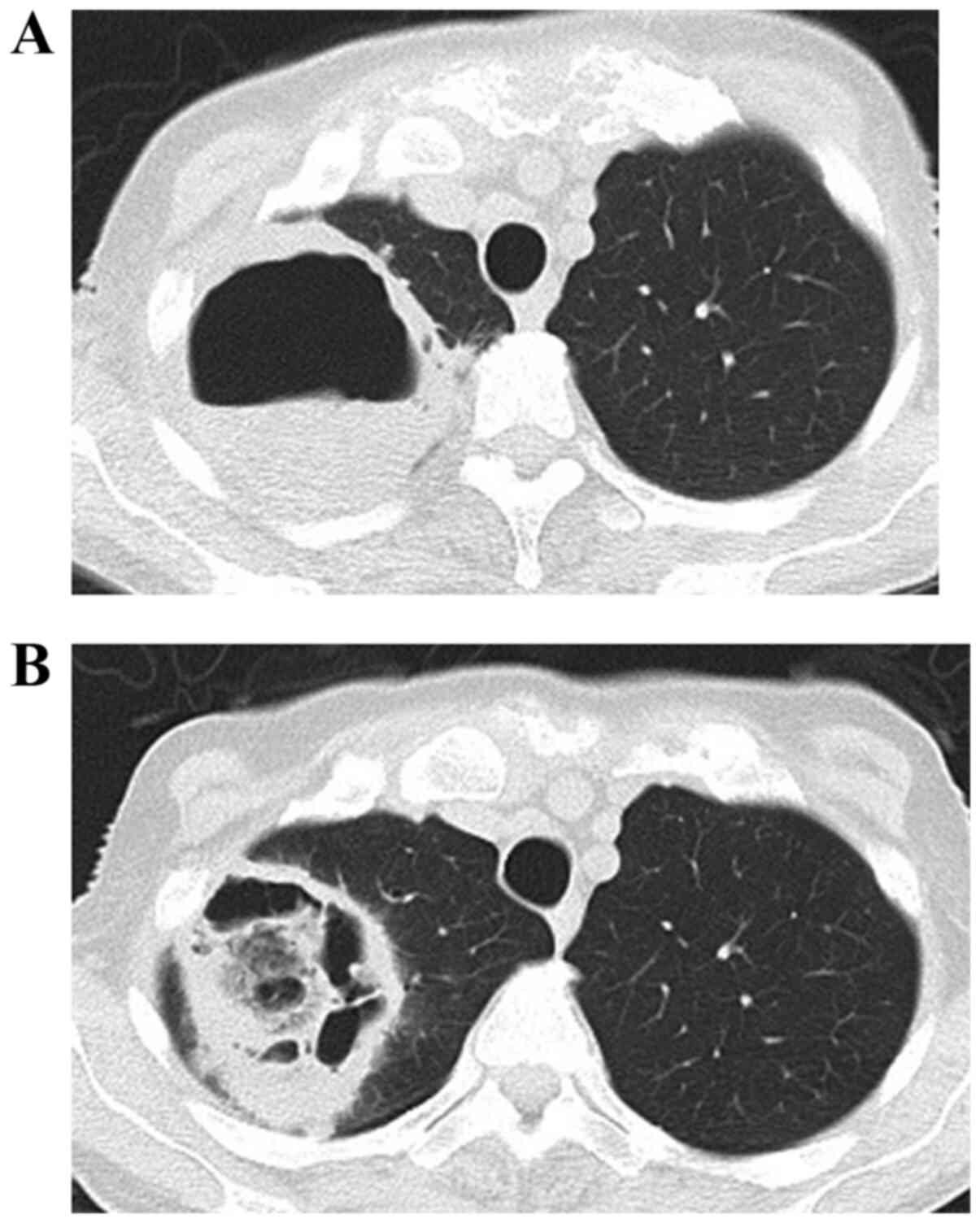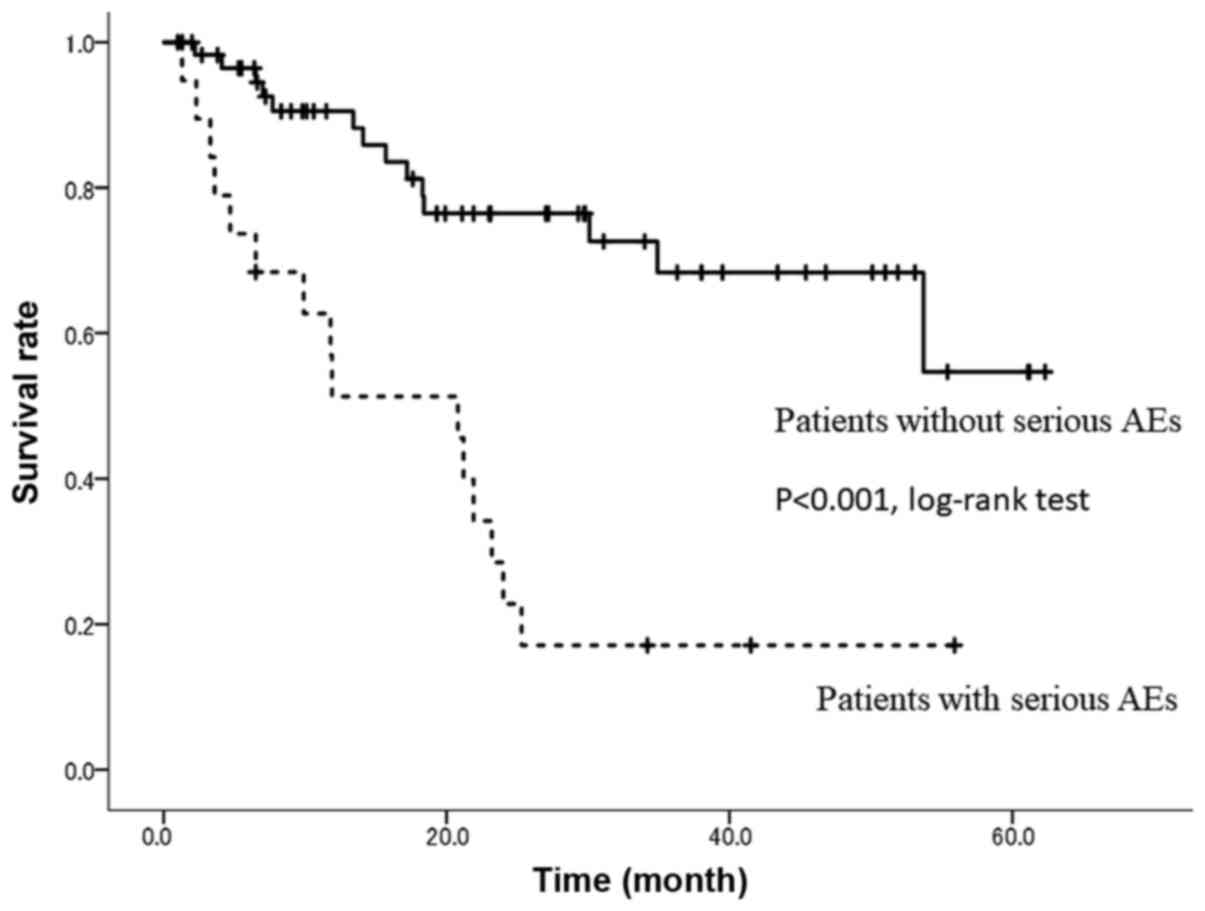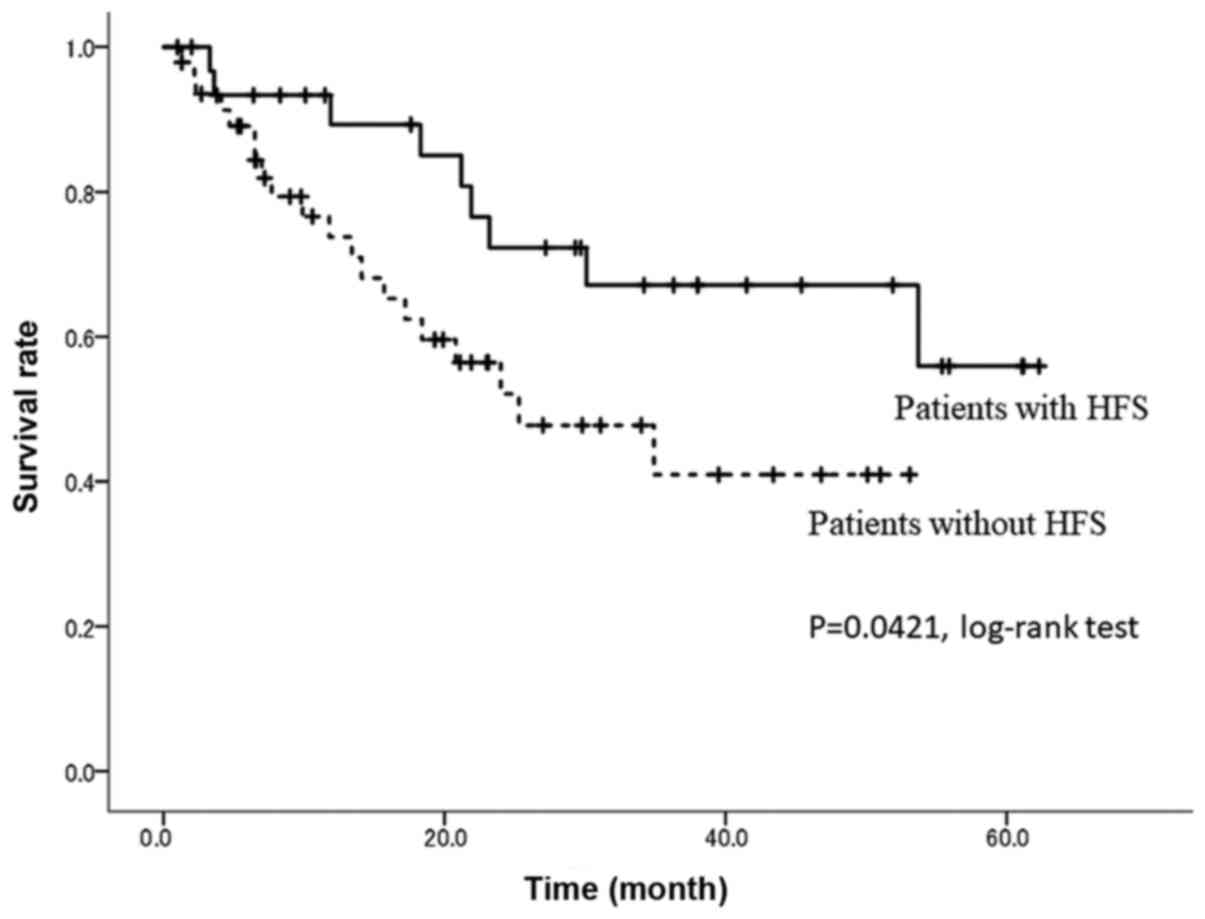|
1
|
Seib CD and Sosa JA: Evolving
understanding of the epidemiology of thyroid cancer. Endocrinol
Metab Clin North Am. 48:23–35. 2019.PubMed/NCBI View Article : Google Scholar
|
|
2
|
Olson E, Wintheiser G, Wolfe KM, Droessler
J and Silberstein PT: Epidemiology of thyroid cancer: A review of
the National Cancer Database, 2000-2013. Cureus.
11(e4127)2019.PubMed/NCBI View Article : Google Scholar
|
|
3
|
Melosky B, Leighl NB, Rothenstein J,
Sangha R, Stewart D and Papp K: Management of EGFR TKI-induced
dermatologic adverse events. Curr Oncol. 22:123–132.
2015.PubMed/NCBI View Article : Google Scholar
|
|
4
|
Eskazan AE and Ozmen D: Tyrosine kinase
inhibitor (TKI) therapy for newly-diagnosed patients with chronic
myeloid leukemia: Focusing on TKI discontinuation due to adverse
events-is better always good? Expert Rev Hematol. 10:583–586.
2017.PubMed/NCBI View Article : Google Scholar
|
|
5
|
Haugen BR: 2015 American Thyroid
Association Management Guidelines for adult patients with thyroid
nodules and differentiated thyroid cancer: What is new and what has
changed? Cancer. 123:372–381. 2017.PubMed/NCBI View Article : Google Scholar
|
|
6
|
Iwasaki H, Yamazaki H, Takasaki H,
Suganuma N, Sakai R, Nakayama H, Hatori S, Toda S and Masudo K:
Treatment outcomes of differentiated thyroid cancer with distant
metastasis improve by tyrosine kinase inhibitors. Oncol Lett.
17:5292–5300. 2019.PubMed/NCBI View Article : Google Scholar
|
|
7
|
Kamba T and McDonald DM: Mechanisms of
adverse effects of anti-VEGF therapy for cancer. Br J Cancer.
96:1788–1795. 2007.PubMed/NCBI View Article : Google Scholar
|
|
8
|
Sonpavde G, Bellmunt J, Schutz F and
Choueiri TK: The double edged sword of bleeding and clotting from
VEGF inhibition in renal cancer patients. Curr Oncol Rep.
14:295–306. 2012.PubMed/NCBI View Article : Google Scholar
|
|
9
|
Machiels JP, Henry S, Zanetta S, Kaminsky
MC, Michoux N, Rommel D, Schmitz S, Bompas E, Dillies AF, Faivre S,
et al: Phase II study of sunitinib in recurrent or metastatic
squamous cell carcinoma of the head and neck: GORTEC 2006-01. J
Clin Oncol. 28:21–28. 2010.PubMed/NCBI View Article : Google Scholar
|
|
10
|
Mancuso MR, Davis R, Norberg SM, O'Brien
S, Sennino B, Nakahara T, Yao VJ, Inai T, Brooks P, Freimark B, et
al: Rapid vascular regrowth in tumors after reversal of VEGF
inhibition. J Clin Invest. 116:2610–2621. 2006.PubMed/NCBI View
Article : Google Scholar
|
|
11
|
Liu L, Wang E, Li L, Chen D, Peng K, Wang
M and Han G: As clinical markers, hand-foot-skin reaction and
diarrhea can predict better outcomes for hepatocellular carcinoma
patients receiving transarterial chemoembolization plus sorafenib.
Can J Gastroenterol Hepatol. 2019(2576349)2019.PubMed/NCBI View Article : Google Scholar
|
|
12
|
Falcone G, Arrigoni C, Dellafiore F,
Gallucci F, Milani V, Boveri S, Ausili D and Caruso R: A systematic
review and meta-analysis on the association between hand-foot
syndrome (HFS) and cancer chemotherapy efficacy. Clin Ter.
170:e388–e395. 2019.PubMed/NCBI View Article : Google Scholar
|
|
13
|
Kobayashi K, Kawakami K, Yokokawa T,
Aoyama T, Suzuki K, Wakatsuki T, Suenaga M, Sato H, Sugiyama E,
Yamaguchi K and Hama T: Association of hand-foot skin reaction with
regorafenib efficacy in the treatment of metastatic colorectal
cancer. Oncology. 96:200–206. 2019.PubMed/NCBI View Article : Google Scholar
|
|
14
|
Iwasaki H, Yamazaki H, Takasaki H,
Suganuma N, Sakai R, Nakayama H, Toda S and Masudo K: Renal
dysfunction in patients with radioactive iodine-refractory thyroid
cancer treated with tyrosine kinase inhibitors: A retrospective
study. Medicine (Baltimore). 98(e17588)2019.PubMed/NCBI View Article : Google Scholar
|
|
15
|
Eisenhauer EA, Therasse P, Bogaerts J,
Schwartz LH, Sargent D, Ford R, Dancey J, Arbuck S, Gwyther S,
Mooney M, et al: New response evaluation criteria in solid tumours:
Revised RECIST guideline (version 1.1). Eur J Cancer. 45:228–247.
2009.PubMed/NCBI View Article : Google Scholar
|
|
16
|
Iwasaki H, Yamazaki H, Takasaki H,
Suganuma N, Nakayama H, Toda S and Masudo K: Lenvatinib as a novel
treatment for anaplastic thyroid cancer: A retrospective study.
Oncol Lett. 16:7271–7277. 2018.PubMed/NCBI View Article : Google Scholar
|
|
17
|
Iwasaki H, Toda S, Suganuma N, Murayama D,
Nakayama H and Masudo K: Lenvatinib vs. palliative therapy for
stage IVC anaplastic thyroid cancer. Mol Clin Oncol. 12:138–143.
2020.PubMed/NCBI View Article : Google Scholar
|
|
18
|
Schlumberger M, Tahara M, Wirth LJ,
Robinson B, Brose MS, Elisei R, Habra MA, Newbold K, Shah MH, Hoff
AO, et al: Lenvatinib versus placebo in radioiodine-refractory
thyroid cancer. N Engl J Med. 372:621–630. 2015.PubMed/NCBI View Article : Google Scholar
|
|
19
|
Locati LD, Piovesan A, Durante C, Bregni
M, Castagna MG, Zovato S, Giusti M, Ibrahim T, Puxeddu E, Fedele G,
et al: Real-world efficacy and safety of lenvatinib: Data from a
compassionate use in the treatment of radioactive iodine-refractory
differentiated thyroid cancer patients in Italy. Eur J Cancer.
118:35–40. 2019.PubMed/NCBI View Article : Google Scholar
|
|
20
|
Hui EP, Ma BBY, King AD, Mo F, Chan SL,
Kam MKM, Loong HH, Ahuja AT, Zee BCY and Chan ATC: Hemorrhagic
complications in a phase II study of sunitinib in patients of
nasopharyngeal carcinoma who has previously received high-dose
radiation. Ann Oncol. 22:1280–1287. 2011.PubMed/NCBI View Article : Google Scholar
|
|
21
|
Blevins DP, Dadu R, Hu M, Baik C,
Balachandran D, Ross W, Gunn B and Cabanillas ME: Aerodigestive
fistula formation as a rare side effect of antiangiogenic tyrosine
kinase inhibitor therapy for thyroid cancer. Thyroid. 24:918–922.
2014.PubMed/NCBI View Article : Google Scholar
|
|
22
|
Katsura Y, Takeda Y, Ohmura Y, Sakamoto T,
Kawai K, Inatome J, Murakami K, Naito A, Kagawa Y, Masuzawa T, et
al: Experience of treatment with lenvatinib in patients with
advanced HCC-A in a single institution. Gan To Kagaku Ryoho.
46:2101–2103. 2019.PubMed/NCBI(In Japanese).
|
|
23
|
Yada M, Masumoto A, Motomura K, Tajiri H,
Morita Y, Suzuki H, Senju T and Koyanagi T: Indicators of sorafenib
efficacy in patients with advanced hepatocellular carcinoma. World
J Gastroenterol. 20:12581–12587. 2014.PubMed/NCBI View Article : Google Scholar
|


















